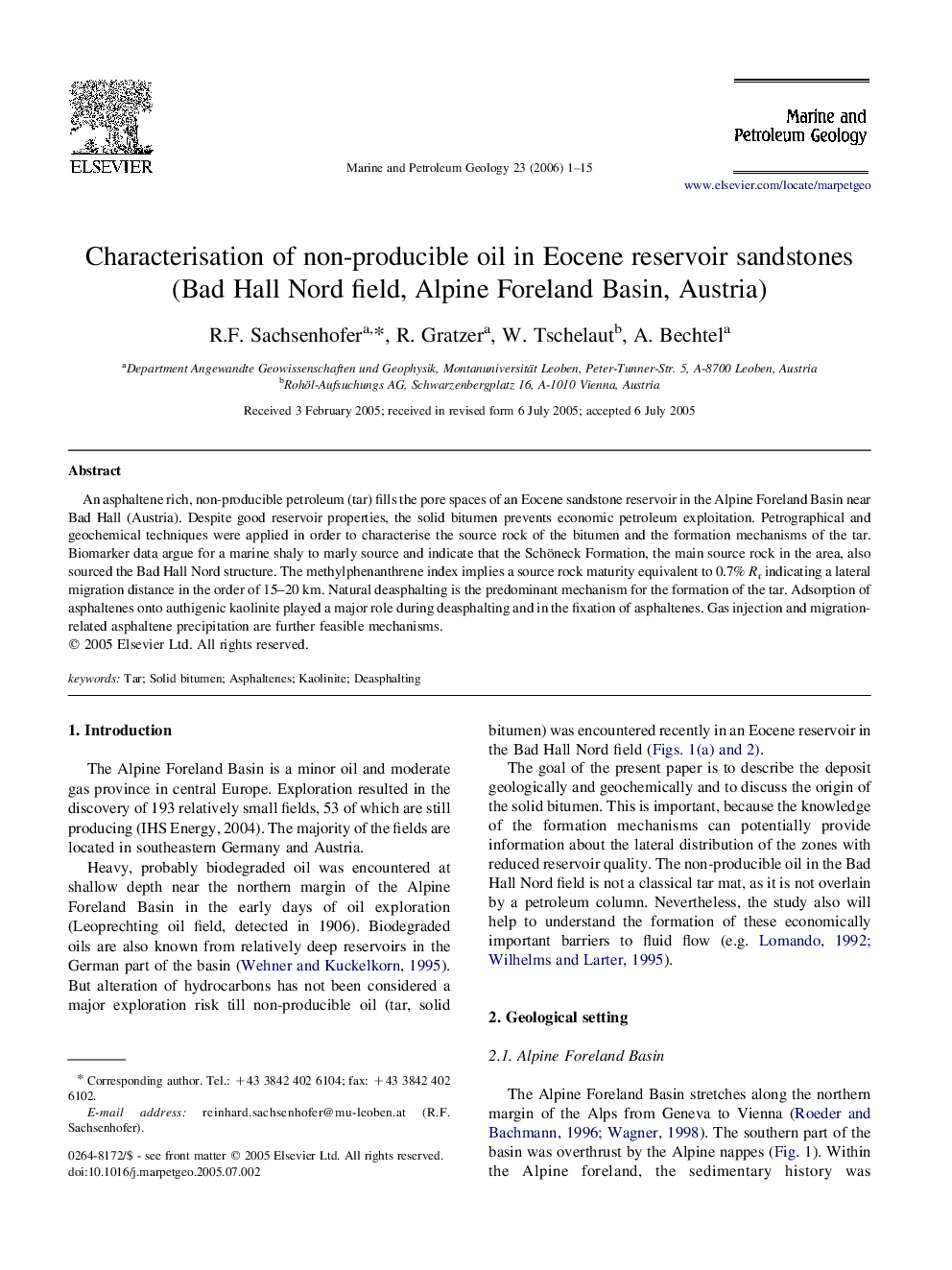| Article ID | Journal | Published Year | Pages | File Type |
|---|---|---|---|---|
| 4696766 | Marine and Petroleum Geology | 2006 | 15 Pages |
An asphaltene rich, non-producible petroleum (tar) fills the pore spaces of an Eocene sandstone reservoir in the Alpine Foreland Basin near Bad Hall (Austria). Despite good reservoir properties, the solid bitumen prevents economic petroleum exploitation. Petrographical and geochemical techniques were applied in order to characterise the source rock of the bitumen and the formation mechanisms of the tar. Biomarker data argue for a marine shaly to marly source and indicate that the Schöneck Formation, the main source rock in the area, also sourced the Bad Hall Nord structure. The methylphenanthrene index implies a source rock maturity equivalent to 0.7% Rr indicating a lateral migration distance in the order of 15–20 km. Natural deasphalting is the predominant mechanism for the formation of the tar. Adsorption of asphaltenes onto authigenic kaolinite played a major role during deasphalting and in the fixation of asphaltenes. Gas injection and migration-related asphaltene precipitation are further feasible mechanisms.
